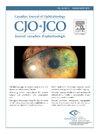The state of eye care and health among Indigenous Peoples in Canada
IF 3.3
4区 医学
Q1 OPHTHALMOLOGY
Canadian journal of ophthalmology. Journal canadien d'ophtalmologie
Pub Date : 2025-02-01
DOI:10.1016/j.jcjo.2024.07.002
引用次数: 0
Abstract
Many Indigenous Peoples are at risk of poor eye health outcomes due to the various financial, social, geographic, and cultural barriers faced when accessing care. Available literature indicates Indigenous populations across Canada suffer greater rates of eye diseases, including diabetic retinopathy, uveitis, and untreated refractive error, as well as their associated complications. However, many gaps within the current state of knowledge exist. Here, we review the available literature regarding the prevalence of eye disease among Indigenous populations in Canada, as well as previously trialed models of eye care delivery. Various models have been attempted to increase access to eye care for Indigenous communities, although several are focused on screening for diabetic retinopathy in northern populations, with many Indigenous Peoples remaining at risk for poor eye health and permanent vision loss. Failing to address the eye care needs of Indigenous communities will hinder the development of adequate solutions, leading to profound inequities, poor eye health outcomes, and greater vision loss among this population. Future research should seek to understand the root causes of why Indigenous communities have high rates of diabetes and associated ocular complications, including the roles of discrimination, colonialism, and mistrust toward the health care system.
La santé oculaire de bon nombre d'Autochtones risque d’être médiocre en raison des différents obstacles – qu'ils soient économiques, sociaux, géographiques ou culturels – auxquels ils font face pour accéder à des soins. Selon les articles publiés à ce jour, les peuples autochtones de l'ensemble du Canada sont affligés d'un taux de maladies oculaires plus élevé, notamment la rétinopathie diabétique, l'uvéite et les erreurs de réfraction non corrigées, sans compter les complications qui s'y greffent. Cela dit, nos connaissances actuelles sur la question sont loin d’être complètes. Nous avons donc entrepris de passer en revue la littérature existante sur la prévalence des maladies oculaires au sein des populations autochtones au Canada et d'examiner les modèles de prestation des soins oculaires qui ont déjà été mis à l'essai. En effet, différents modèles d'amélioration de l'accès aux soins oculaires ont été testés auprès des communautés autochtones. Comme plusieurs modèles mettent surtout l'accent sur le dépistage de la rétinopathie diabétique dans les populations nordiques, un grand nombre d'Autochtones continuent d’être exposés à un risque de santé oculaire médiocre et de perte de vision permanente. En n'abordant pas les besoins des communautés autochtones en matière de prestation des soins oculaires, on nuit à la création de solutions adéquates, ce qui se traduit par l'apparition d'inégalités criantes, d'une santé oculaire médiocre et d'une perte de vision plus importante au sein de ces populations. Les études futures doivent se pencher sur les causes profondes à l'origine des taux élevés de diabète et de complications oculaires connexes dans les communautés autochtones, sans pour autant négliger le rôle de la discrimination, du colonialisme et de la méfiance de ces populations envers le système de santé.
加拿大原住民的眼保健和健康状况。
由于在获得医疗服务时面临各种经济、社会、地理和文化障碍,许多原住民面临眼部健康状况不佳的风险。现有文献表明,加拿大各地的原住民罹患糖尿病视网膜病变、葡萄膜炎、未经治疗的屈光不正等眼部疾病及其相关并发症的比例较高。然而,目前的知识水平还存在许多空白。在此,我们回顾了有关加拿大原住民眼疾患病率的现有文献,以及之前试用过的眼科医疗服务模式。为了增加原住民社区获得眼科护理的机会,人们尝试了多种模式,但其中几种模式主要针对北方人群的糖尿病视网膜病变筛查,而许多原住民仍然面临着眼部健康状况不佳和永久性视力丧失的风险。如果不能满足原住民社区的眼保健需求,就会阻碍制定适当的解决方案,从而导致严重的不平等、眼保健效果不佳以及原住民视力丧失加剧。未来的研究应寻求了解土著社区糖尿病和相关眼部并发症高发的根本原因,包括歧视、殖民主义和对医疗保健系统的不信任。
本文章由计算机程序翻译,如有差异,请以英文原文为准。
求助全文
约1分钟内获得全文
求助全文
来源期刊
CiteScore
3.20
自引率
4.80%
发文量
223
审稿时长
38 days
期刊介绍:
Official journal of the Canadian Ophthalmological Society.
The Canadian Journal of Ophthalmology (CJO) is the official journal of the Canadian Ophthalmological Society and is committed to timely publication of original, peer-reviewed ophthalmology and vision science articles.

 求助内容:
求助内容: 应助结果提醒方式:
应助结果提醒方式:


